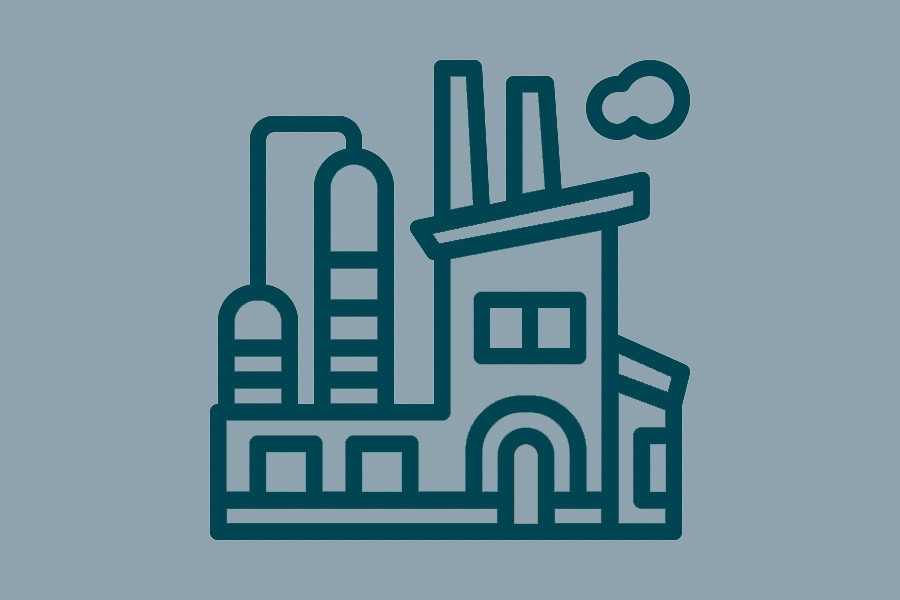Ensuring employment at optimum level for citizens who can work efficiently is one of the major challenges for the Least Developed Countries (LDCs), developing economies and also for the developed nations. The number of vacancies in public service is very nominal in most countries. Governments of most countries can only absorb a minimum number of jobseekers. This is why governments around the world encourage their private sectors to expand their business and generate employment opportunities for jobseekers. At the same time, governments assist job-seeking young men and women to become entrepreneurs. In the process, they can create job opportunities for others through their respective enterprises.
Similarly Bangladesh government is also inspiring the youth to become entrepreneurs with training, credit, industrial policy and other support from the government. It is difficult to provide all industrial logistics including lands, electricity, gas, water and infrastructure to hundreds of enterprises located in different parts of the country. But such facilities can be provided to thousands of enterprises based in a particular location. Therefore, Bangladesh government is encouraging location-specific industrialisation through BSCIC Industrial Estates, Export Processing Zone (EPZ), and Special Economic Zone (SEZ) models. All of the above mentioned models are different forms of industrial clustering. It is has been proven that, cluster-based industrialisation is comparatively swift, viable, comprehensive and result-worthy method for development of entrepreneurship and employment generation.
Enterprises of a cluster are collocated, interdependent, interlinked, and share common strengths, weaknesses, opportunities and threats. As a result, an invisible competition is there among the enterprises to produce qualitative products at competitive prices. Firms are always coming up with new features to a common product in order to gain comparative advantage in the market. New innovation and higher productivity provide economies of scale where large number of buyers is available in a cluster. Enterprises located within a cluster enjoy a long list of positive impacts including higher productivity, better quality, economies of scale, availability of buyers, availability of high standard raw materials, availability of skilled labour, knowledge about new technology, shared vision, competitive tendency, innovation, new product development, new features in existing product line, collective negotiation (with government and policymakers) power, and collective action / joint effort.
To avail the benefits of a cluster, government/cluster development authority has to select an appropriate model for cluster development. There are several cluster development models offered by the cluster development practitioners/agencies around the world. Notable cluster development models are the UNIDO Cluster Development Approach-1 & 2 offered by the United Nations Industrial Development Organisation (Murali & Banerjee, 2011); Five Phase Twelve Steps Model for Cluster Development offered by the Cluster Navigator-New Zealand (Ifor, 2005); Cluster Development approach in Republic of Croatia offered by Maxwell Stamp Plc. (Maxwell Stamp, 2013); Cluster Development Model offered by the International Trade Department, World Bank (World Bank, 2009); Cluster Map of an Agri-business cluster offered by the World Bank; Cluster Based City Economic Development Concept offered by the ADB (Choe and Roberts, 2011) and more. Besides these there are contributions of Cluster Pulse-India and TCI Network-USA in cluster development models.
None of these models are fully implementable in a least developed country like Bangladesh due to limitations in access to finance, technical knowledge, technological adaptability, and managerial capacity to dedicate to cluster development. With all these limitations in mind "Joynal and Mizan (JM) Model for Cluster Development" was designed with flexibility, check and balance mechanism and expected outcome of each phases. This model would be equally effective in least developed, developing as well as developed economies.

JOYNAL AND MIZAN (J.M.) MODEL FOR CLUSTER DEVELOPMENT:
This model can guide cluster development authorities/practitioners / cluster managers to develop a cluster in a particular location. It includes five phases and 21 steps from identification to making the cluster self-guided. J.M. Model for Cluster Development is as follows:
JM Model for Cluster Development has already been accepted by the Scientific Community and cluster development experts. It was published by the "Journal of Economy and entrepreneurship, Vol. 9, Nom. 7, page 245-251" in 2015 from Russia. In the same year this model was published by another American Journal namely "International Journal of Economics, Finance and Management Sciences, Vol. 3, No. 4, 2015, pp. 358-366". Finally this model was completely defined in another article published by the "Entrepreneurship & Organization Management Journal from USA in its Volume 4, Issue 3" in November 2015.
This model is equally applicable to develop a naturally growing industrial cluster like the 177 SME clusters in Bangladesh or pre-planned industrial cluster development like EPZs or SEZs. Government is moving towards its plan to develop 100 SEZs in Bangladesh. Few of these are likely to be operated by the private sector. It is high time that an applicable model for industrial cluster development is adopted in Bangladesh. Such a model can guide the cluster development agencies to ensure uniform and unique facility to all of the clusters. This can also establish a sustainable and self-guided industrial base for the Bangladesh economy.
Md. Joynal Abdin is Executive Director, DCCI Business Institute (DBI).


